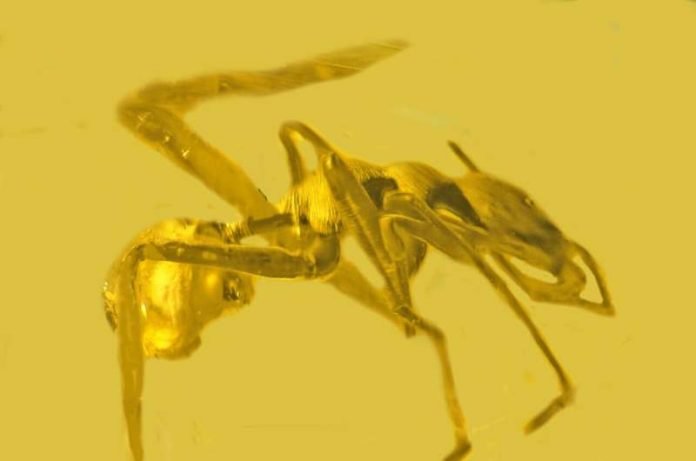
In the intricate dance of nature, where every creature plays a role in the delicate balance of the ecosystem, some have perfected the art of deception to ensure their survival.
One such fascinating example comes from the world of spiders, particularly those who have taken mimicry to an impressive level by disguising themselves as ants.
This intriguing survival strategy is highlighted in recent research by paleobiologist George Poinar Jr., which presents an early record of an ant-mimicking spider preserved in fossilized resin.
George Poinar Jr., affiliated with Oregon State University’s College of Science, delves into the evolution of this remarkable form of mimicry in his paper published in Historical Biology.
He explains that ants are not a popular choice on the menu for many predators due to their aggressive defense mechanisms, including a strong bite, venom, and the ability to summon a small army of nestmates for backup.
Spiders, on the other hand, lack these chemical defenses and are more solitary creatures, making them more attractive to predators such as larger spiders, wasps, and birds. By masquerading as ants, these clever spiders increase their chances of survival by being less appealing to their predators.
The species discussed by Poinar, named Myrmarachne colombiana, was found in copal, a younger cousin of amber. While amber fossils can be millions of years old, copal can still reach up to 3 million years in age.
However, the exact age of the specimen in question remains undetermined due to the small size of the resin block, which would risk damage to the spider if tested. This particular specimen was unearthed in Medellin, Colombia, a place where no living ant-mimicking spiders have been recorded.
Achieving such a convincing disguise is no small feat for spiders, given the significant differences in appearance between ants and spiders. Ants have six legs and two long antennae, whereas spiders boast eight legs and lack antennae.
Spiders that engage in this mimicry often use their front legs to imitate antennae, a clever adaptation, but the differences don’t stop there.
The body structure of ants and spiders also varies, with ants having a narrow segment called the petiole that separates their abdomen and cephalothorax, a feature spiders do not naturally possess.
Poinar believes that this evolutionary marvel involves more than just random mutations and natural selection. He suggests that there may be an element of “spider reasoning and intelligence” involved, as these spiders often tailor their disguises to resemble specific ant species in their environment.
This view challenges the traditional belief that insect behavior is solely instinctual and opens up fascinating questions about the cognitive abilities of spiders.
This mimicry isn’t exclusive to one family of spiders. Several groups, including jumping spiders (Salticidae), sun spiders (Corinnidae), flower spiders (Thomisidae), and ant spiders (Zodariidae), have evolved to mimic ants and, in some cases, other insects like flies, beetles, and wasps.
The discovery of Myrmarachne colombiana in copal suggests that the practice of mimicry as a survival strategy has a long history, further enriching our understanding of the complexity and adaptability of life on Earth.
The research findings can be found in Historical Biology.
Copyright © 2024 Knowridge Science Report. All rights reserved.



